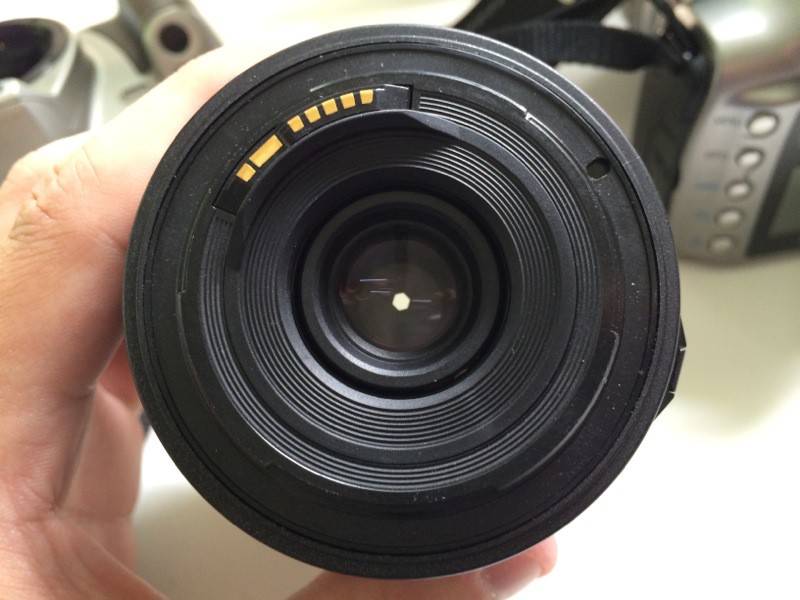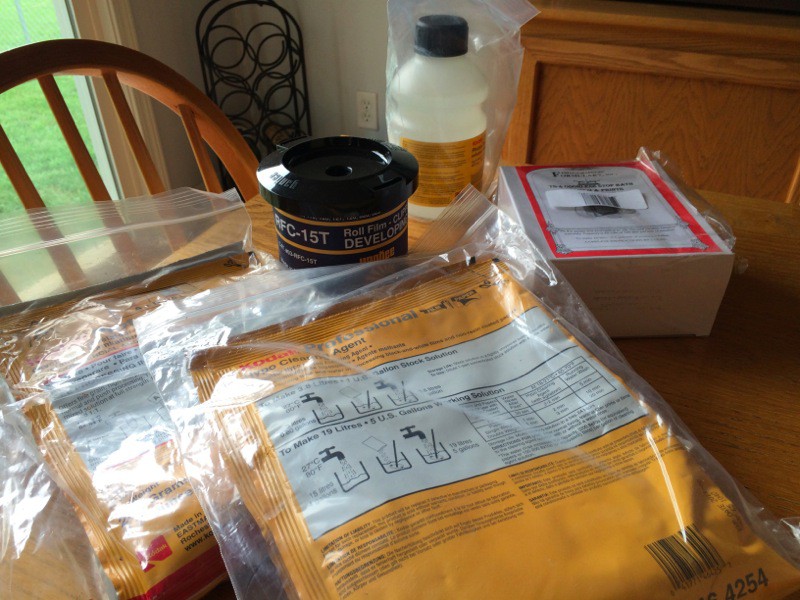We are pushing the limits of what is achievable with this optical system. The limits are:
Print resolution of the printer making the patterns
Resolving power of the lens
Resolving power of the film
Obviously, we could simply print the codestrip directly with the printer. Unfortunately, most consumer printers max out at around 1200 DPI, meaning that the printed features would be around 21 microns wide. Such resolution would give about 10.6 micron resolution (about .0004 inch) with the quadrature encoder, an order of magnitude more than the 1 micron (.00004 inch) resolution I would like. Therefore, we will be printing the codestrip and miniaturizing it onto 35mm film stock. This is like increasing the DPI of the printer - a 5 inch square at 1200 DPI miniaturized onto a 1 inch square of film is functionally equivalent of having a 6000 DPI printer. In this case, each feature on film will be 2 microns wide. Since a frame of 35mm film is 36mm wide, there will be 18000 features on the film. Printing at 1200 DPI, that means we’d need at least 15 inches of printed paper. The formula is: feature size = 36mm / (resolution * print_width). 5 micron (.0002”) is easy - 3” at 1200 DPI (remember, because of the quadrature encoder process the resolving power is half the width of the features on the film). 2.5 micron (.0001”) requires 6 inches, etc. Every time we halve the resolution we need to double the length. It’s apparent that 5 micron resolution will be no problem, but getting near 1 micron resolution (2 micron features) will be very difficult.
The camera lens presents another area for potential degradation. The lens I’m using (a Tamron 28-80mm zoom lens) is not a extremely high quality lens, so carefully controlling the environment will be crucial to getting the best picture from the lens. Lenses all have some amounts of distortion, particularly barrel distortion. Barrel distortion warps the image outwards or inwards and would reduce the accuracy of the codestrip at the edges. To combat this we will determine what the barrel distortion characteristics of the lens are and predistort the printed code in the opposite way to compensate. Additionally, the lens might have several other, smaller errors - chromatic aberrations, spherical distortion, or perhaps not be perfectly focused to name a few. To begin we will be using white light to illuminate the code, but we could switch to a monochromatic light source to combat aberrations that affect color. We will also be trying different apertures. Stopping the lens down to a very small aperture - f/22 - will make the lens behave more like an ideal (pinhole) lens , and will help correct very minor focus issues (image below). However, the angular resolution of a lens is inversely proportional to the aperture size - a larger aperture will allow the lens to resolve smaller features.
The film I have chosen for this process is Kodak’s T-MAX 100. I chose this film because I actually have the capability to develop it at home - several years ago I set up a darkroom and lab for black and white film photography and decided on T-MAX film at that point (image below). T-MAX 100 is a very good looking film and I have been quite impressed with it for photography. However, the film itself represents another limit - the film must be able to resolve 2 micron features. According to the data sheet, with 1000:1 contrast the film is rated at 200 lines/mm. A “line” is a black to white transition, so that gives us 400 transitions/mm, or 2.5 micron features. That figure is very close to the desired 2 microns, so the hope is that we will be able to push the film to that level by carefully controlling exposure, focus and having extremely high contrast.
By carefully controlling as many parameters as possible I hope to be able to produce 2 micron features on film. 5 micron should be very possible, and I would even be happy with 3 micron features. But obviously I’d like to get as small as possible, and that means shooting for the 2 micron moon!


Discussions
Become a Hackaday.io Member
Create an account to leave a comment. Already have an account? Log In.